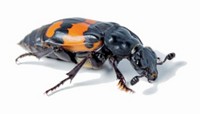Advertisement
Grab your lab coat. Let's get started
Welcome!
Welcome!
Create an account below to get 6 C&EN articles per month, receive newsletters and more - all free.
It seems this is your first time logging in online. Please enter the following information to continue.
As an ACS member you automatically get access to this site. All we need is few more details to create your reading experience.
Not you? Sign in with a different account.
Not you? Sign in with a different account.
ERROR 1
ERROR 1
ERROR 2
ERROR 2
ERROR 2
ERROR 2
ERROR 2
Password and Confirm password must match.
If you have an ACS member number, please enter it here so we can link this account to your membership. (optional)
ERROR 2
ACS values your privacy. By submitting your information, you are gaining access to C&EN and subscribing to our weekly newsletter. We use the information you provide to make your reading experience better, and we will never sell your data to third party members.
Biological Chemistry
Chiral Sex Cues
Male elephants' mix of pheromone enantiomers stirs up animal passions
by Ivan Amato
January 2, 2006
| A version of this story appeared in
Volume 84, Issue 1

For several months each year, male elephants emit a message-laden chemical secretion from glands above their cheeks. It's part of an annual social phase known as musth, a time of pumped-up aggression and sexual activity for males at or beyond their teen years. Animal communications researcher L. Elizabeth L. Rasmussen of Oregon Health & Science University, Beaverton, has for years been teasing apart the musth messages in Asian elephants, and now she and her colleagues have uncovered a chemical subtlety with powerful social consequences (Nature 2005, 438, 1097).
Males in musth emit mirror-image forms, or enantiomers, of the pheromone known as frontalin, which was first identified in 1969. Rasmussen's team has found that male Asian elephants, as they mature and as they progress through musth each year, emit frontalin enantiomers in changing ratios.
The researchers harvested musth secretions from more than 100 elephants at different locations by gently pressing on the cheeks of often-frisky male elephants. The scientists collected musth secretions from males of different ages, ranging from teenage musth rookies to mature males in their 30s and 40s, and also from the same animals at different times during musth.
The scientists found that young males produce frontalin mixtures richer in one enantiomer than the other. As the elephants mature, the enantiomeric mixtures become more balanced and more concentrated. When that happens, the mixture repels other males while piquing the interest of ovulating females. The researchers discovered this in behavioral tests in which male and female elephants were coaxed into entering a test site spiked in several locations with musth secretions.
A next step, the researchers say, will be to investigate how the two frontalin enantiomers interact with receptor proteins and other molecules in the pheromone-signaling process.






Join the conversation
Contact the reporter
Submit a Letter to the Editor for publication
Engage with us on Twitter